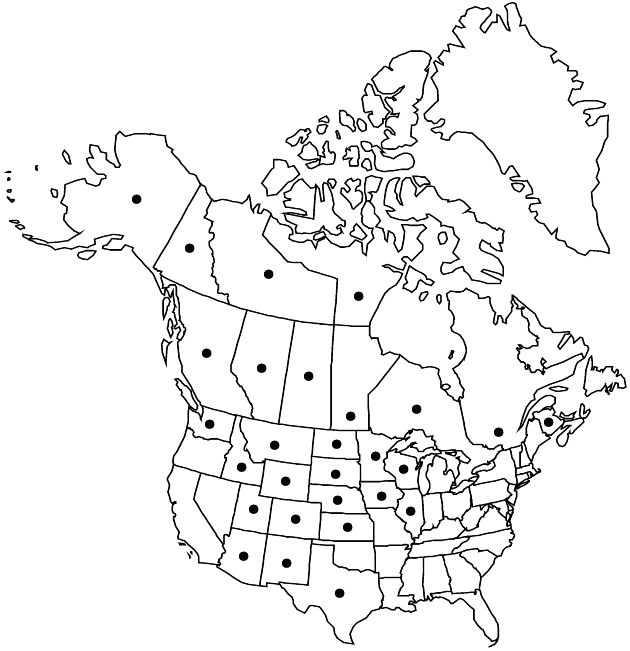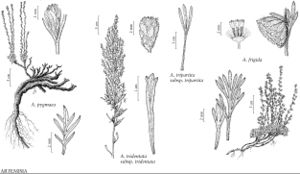Difference between revisions of "Artemisia frigida"
Sp. Pl. 3: 1838. 1803.
FNA>Volume Importer |
FNA>Volume Importer |
||
| Line 54: | Line 54: | ||
|publication year=1803 | |publication year=1803 | ||
|special status= | |special status= | ||
| − | |source xml=https://jpend@bitbucket.org/aafc-mbb/fna-data-curation.git/src/ | + | |source xml=https://jpend@bitbucket.org/aafc-mbb/fna-data-curation.git/src/f6b125a955440c0872999024f038d74684f65921/coarse_grained_fna_xml/V19-20-21/V19_886.xml |
|tribe=Asteraceae tribe Anthemideae | |tribe=Asteraceae tribe Anthemideae | ||
|genus=Artemisia | |genus=Artemisia | ||
Revision as of 18:39, 24 September 2019
Perennials, 10–40 cm (forming silvery mats or mounds), strongly aromatic. Stems gray-green or brown, glabrescent. Leaves persistent, silver-gray; blades ovate, 0.5–1.5(–2.5) cm, 1–2-ternately lobed (lobes 0.2–0.5 mm wide), faces densely whitish-pubescent. Heads in (leafy) paniculiform arrays 0.5–2(–4) × 4–15(–20) cm. Involucres globose, (3–)5 × (2–)5–6 mm. Phyllaries gray-green (margins sometimes brownish), densely tomentose. Florets: pistillate 10–17; bisexual 20–50; corollas 1.5–2 mm, glabrous. Cypselae 1–1.5 mm, glabrous. 2n = 18.
Phenology: Flowering summer–fall.
Habitat: Fields, meadows, dry grasslands, steppes, usually stony, well-drained soils
Elevation: 500–3300 m
Distribution

Alta., B.C., Man., N.B., N.W.T., Nunavut, Ont., Que., Sask., Yukon, Alaska, Ariz., Colo., Idaho, Ill., Iowa, Kans., Minn., Mont., Nebr., N.Mex., N.Dak., S.Dak., Tex., Utah, Wash., Wis., Wyo., Eurasia.
Discussion
Reports of Artemisia frigida from eastern Canada (Ontario eastward), the eastern United States (e.g., Connecticut, Massachusetts, Michigan, Vermont), and Arkansas and Missouri appear to be from old garden sites where the plants may persist. The similarity of this native species to cultivars from eastern Asia (especially Siberia) has led to a number of reports that are apparently based on other cultivars. As a plant with attractive silver foliage, this species has good potential as a drought-hardy plant for flower gardens in cold climates.
Selected References
None.
